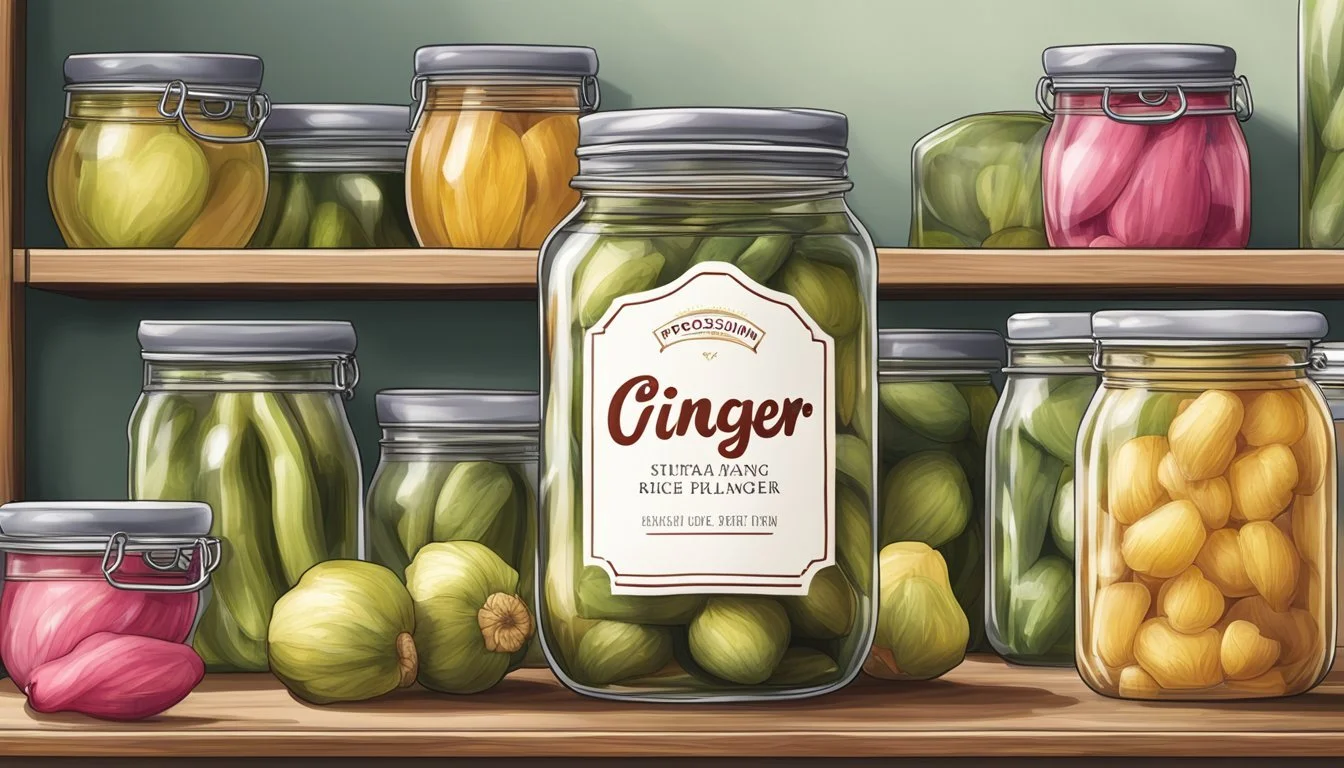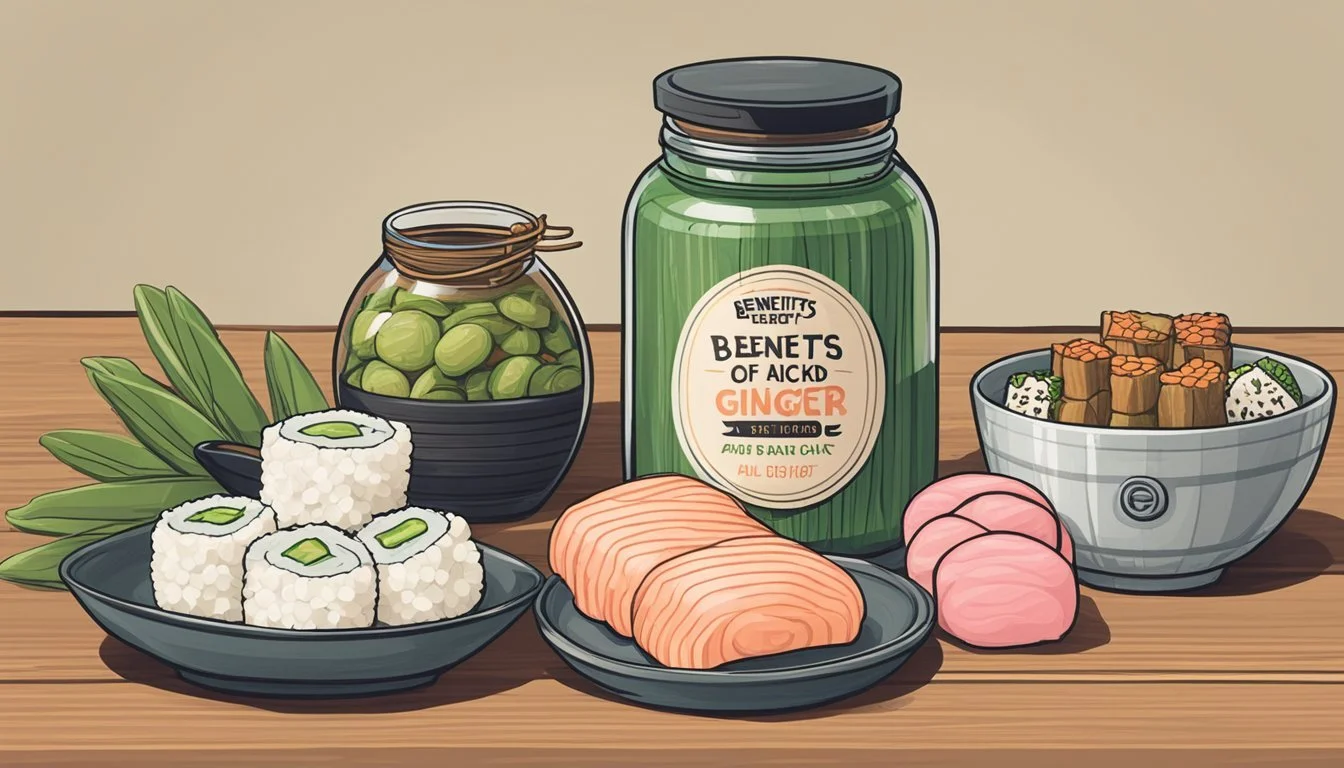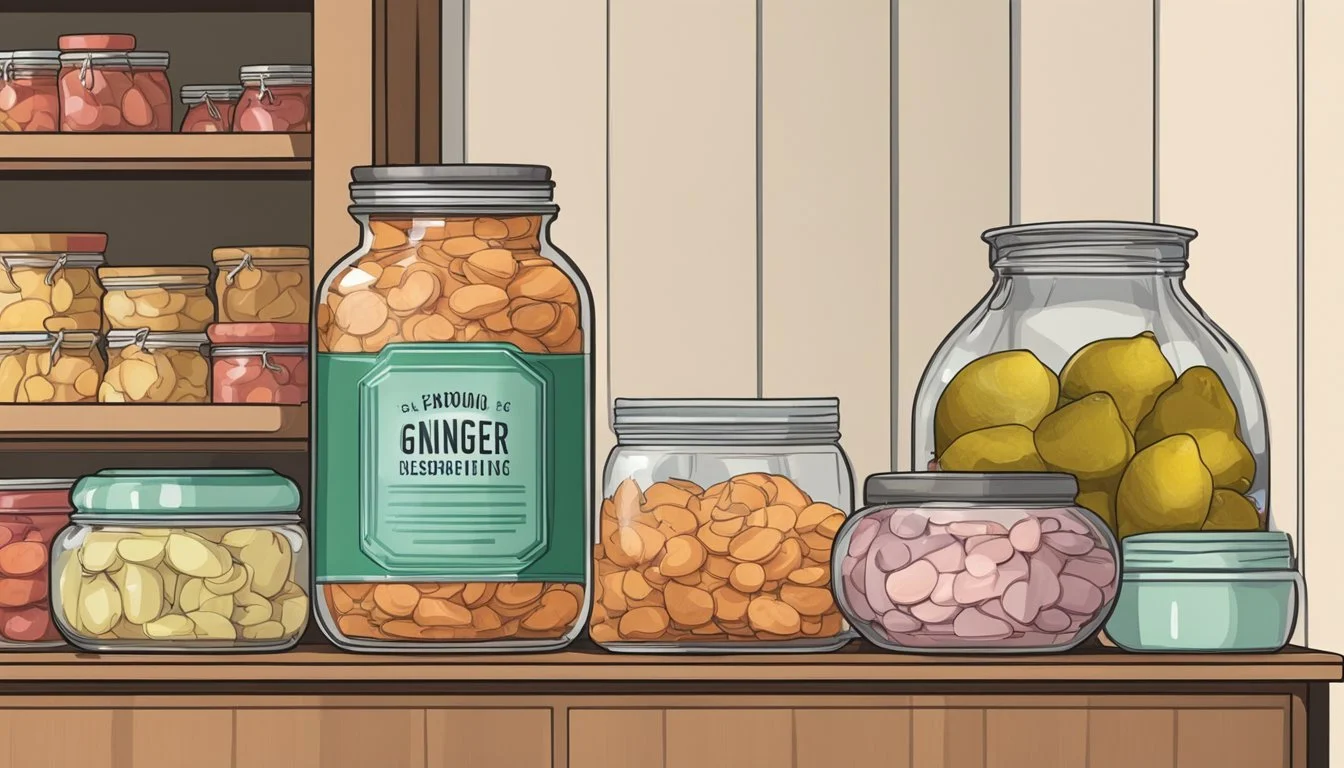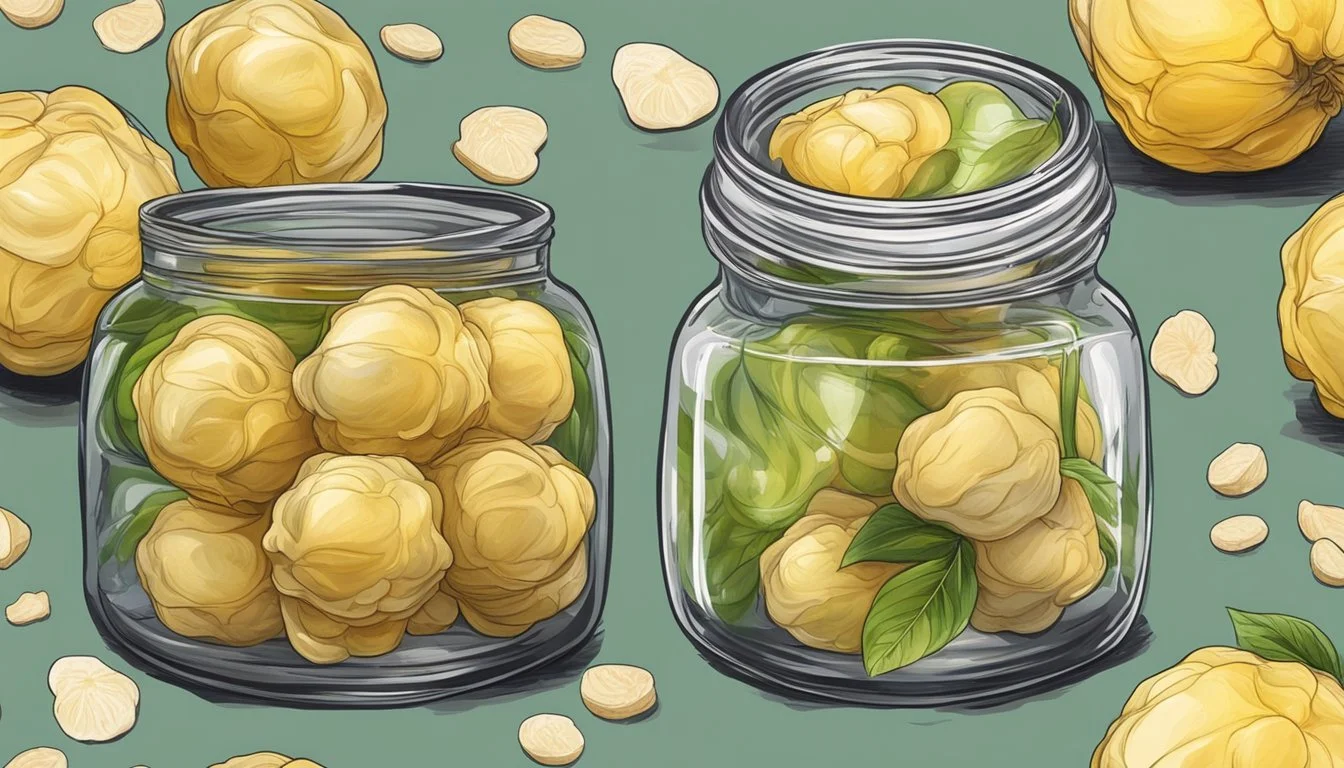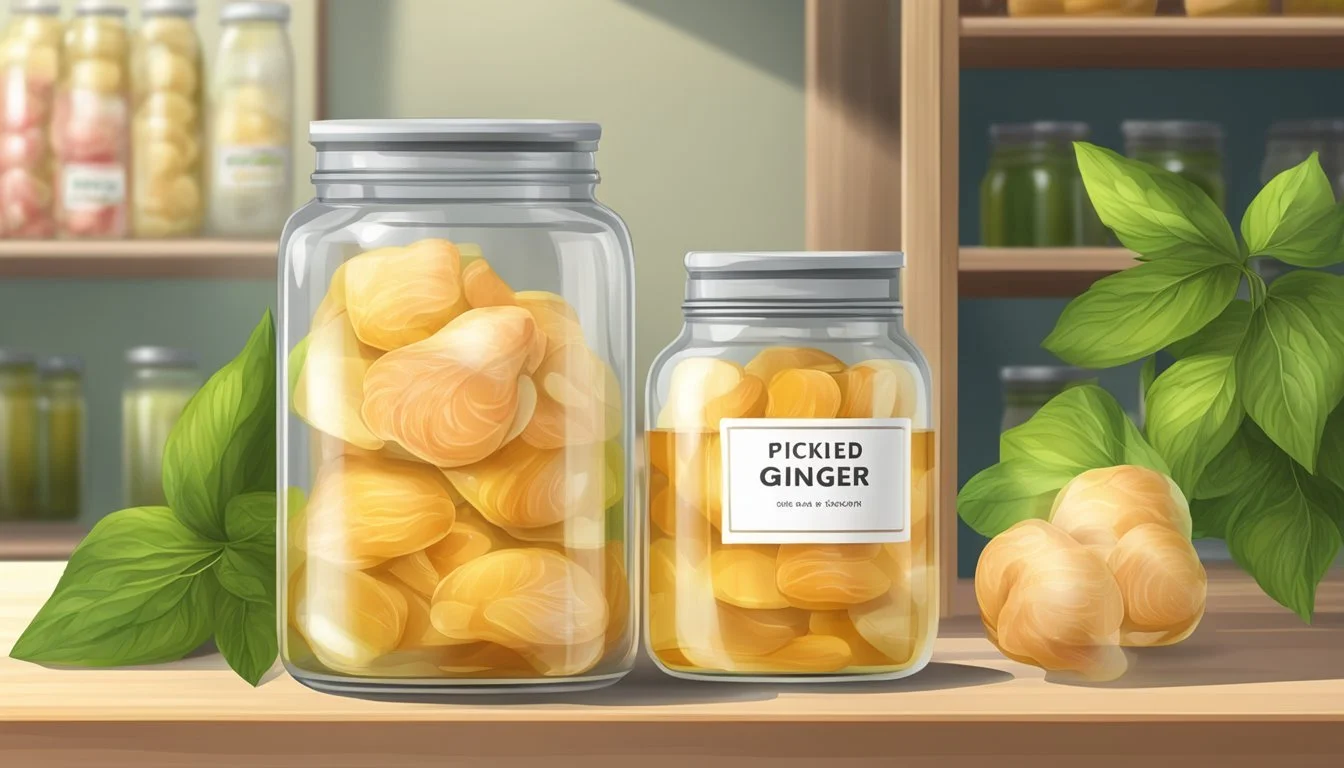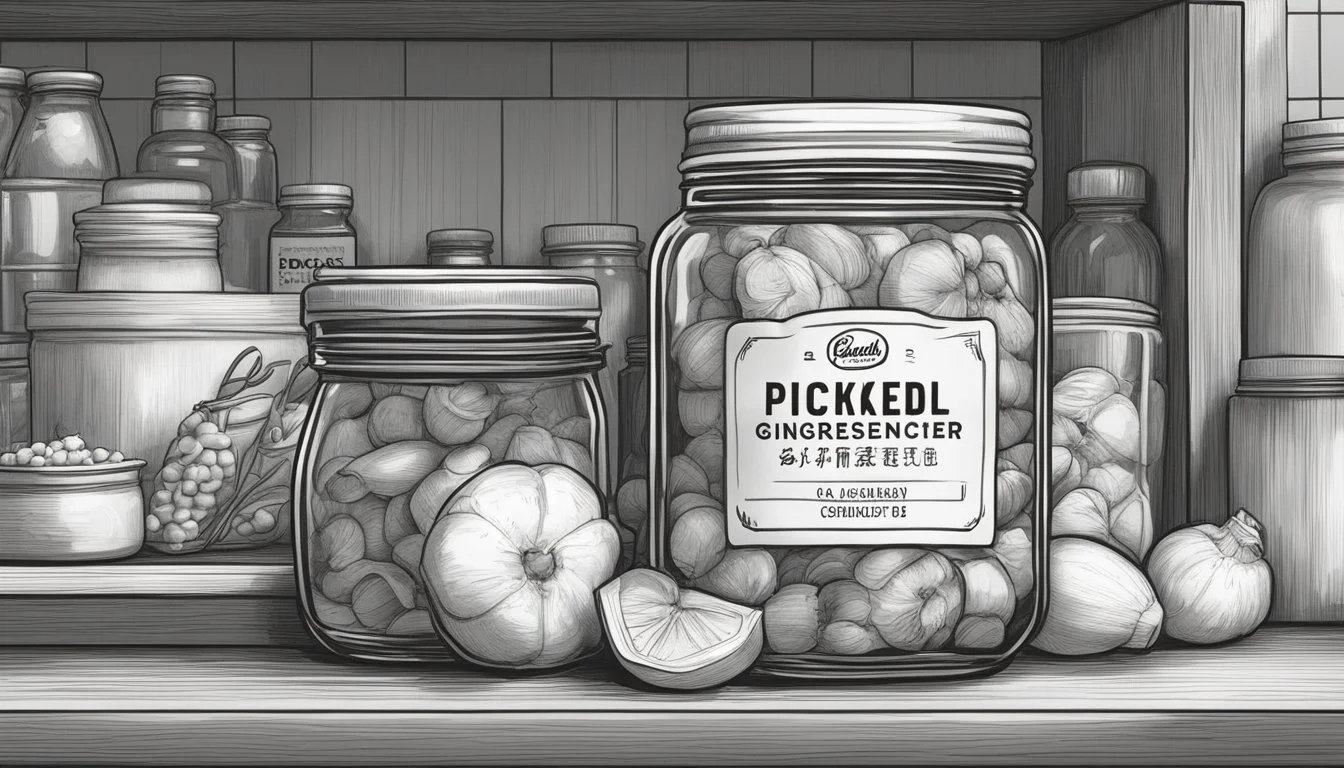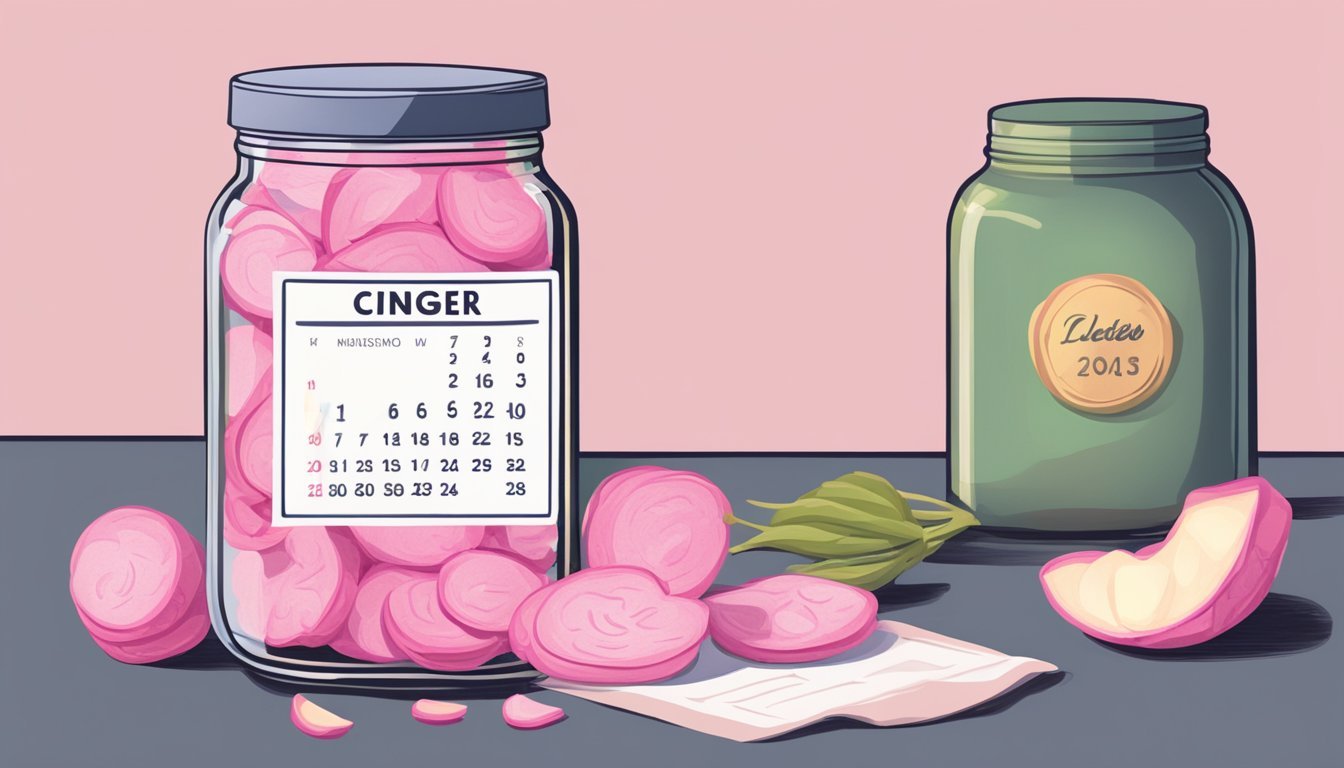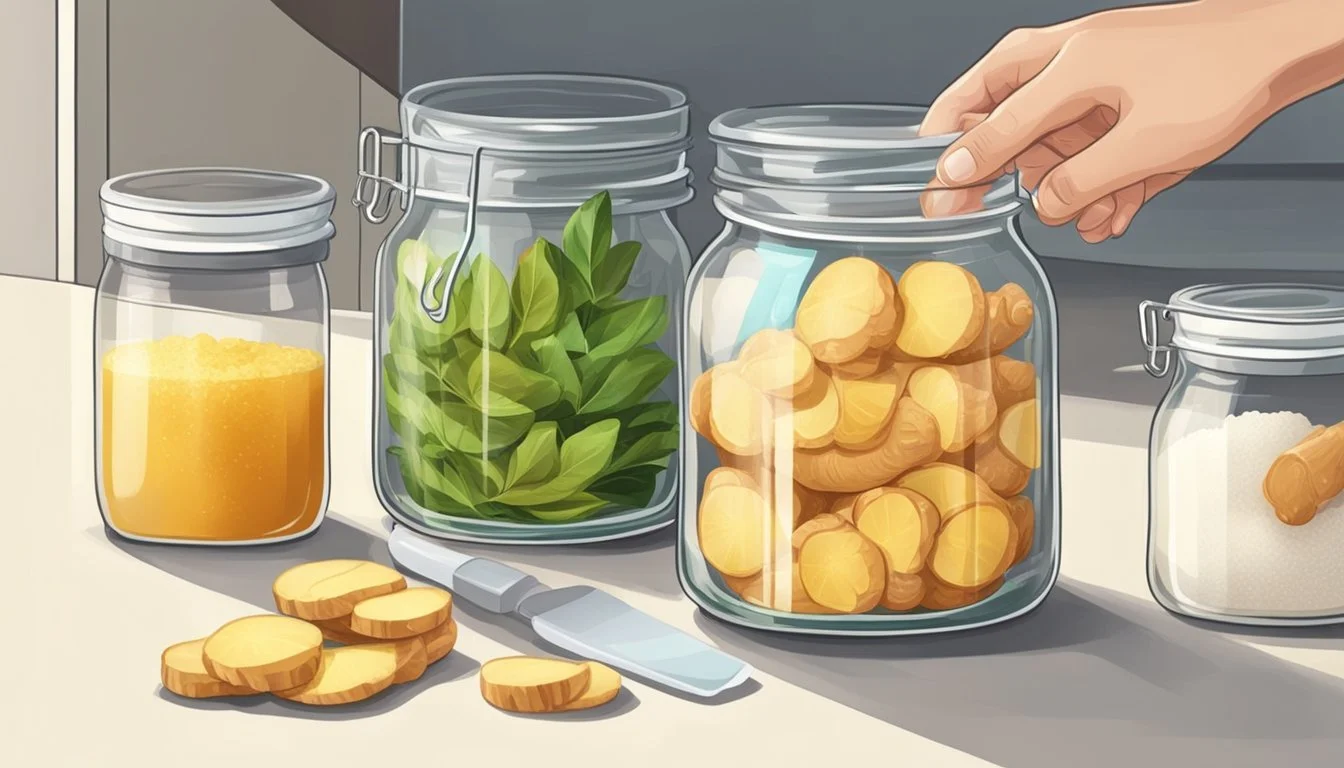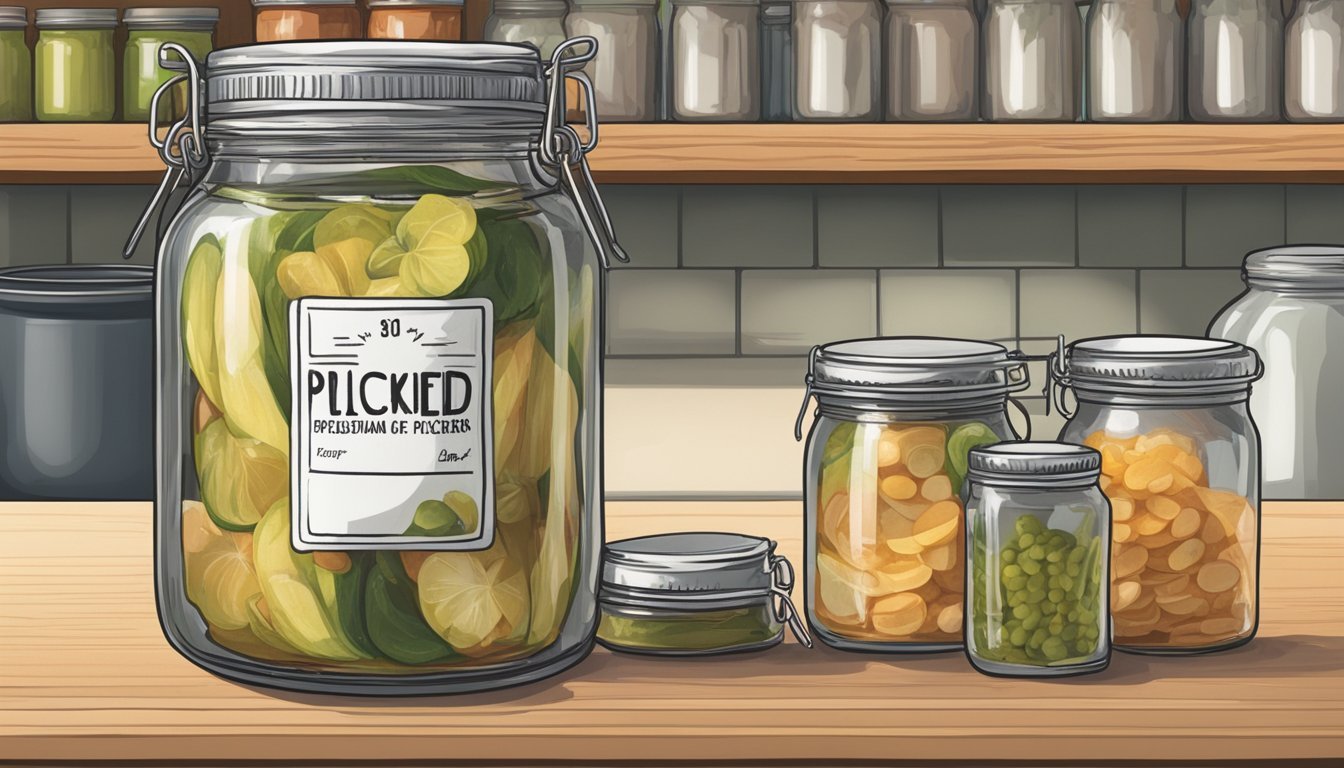How Long Does Pickled Ginger Last?
Shelf Life and Storage Tips
Pickled ginger, often accompanying sushi, (What wine goes well with sushi?) is valued both for its zesty flavor and health benefits. Commonly known as "gari," this delicacy is made from young ginger roots that are thinly sliced and marinated in a solution of sugar and vinegar. This process not only preserves the ginger but also imparts a slightly sweet and tangy taste, making it a perfect palate cleanser or condiment in various culinary applications.
With proper storage, pickled ginger can last up to a year without significant degradation in quality. It’s important to keep it in an airtight container within the refrigerator to maintain its flavor and prevent spoilage. The beneficial compounds in ginger, such as gingerol, are thought to be preserved through the pickling process, thus extending the shelf life while retaining the ginger's purported health advantages.
What Is Pickled Ginger?
Pickled ginger, commonly referred to as gari in Japanese cuisine, is a condiment traditionally made from thinly sliced young ginger roots. It is marinated in a solution of vinegar—usually rice vinegar—sugar, and salt, producing a sweet and tangy flavor with a distinct zing. Pickled ginger is often served alongside sushi and is valued for its unique taste and potential health benefits, including its antioxidants.
Origin and Cultural Significance
Gari has its roots deeply planted in Japanese cuisine, where it accompanies sushi and is known for its palate-cleansing properties. It is believed to have originated during the Edo period as a measure to prevent foodborne illness. Over time, pickled ginger became a staple component of the sushi experience, and its consumption extends beyond Japan, reflecting the global popularity of sushi. The cultural significance of gari is not only tied to its culinary use but also its role in promoting a harmonious dining experience by offering a refreshing contrast to the savory flavors of sushi.
Varieties and Terminology
Pickled ginger can be classified into several varieties depending on the type of ginger used and the pickling brine's composition. Young ginger is preferred for making gari, as it has a milder and less fibrous texture compared to mature ginger. The condiment often receives its pink hue naturally when fresh young ginger is used but may also be artificially colored in some commercial varieties. While gari is the term widely recognized in relation to sushi ginger, other names and forms of pickled ginger exist within different culinary traditions, varying in degrees of tanginess and sweetness depending on the ratio of vinegar, sugar, and salt used in the pickling process.
Benefits of Pickled Ginger
Pickled ginger, often associated with Japanese cuisine, provides specific health advantages, particularly relating to digestion and nutritional value.
Digestive Health
Pickled ginger is frequently touted for its potential to aid in digestion. It may help stimulate saliva and digestive fluids, enhancing the overall digestive process. Additionally, as a palate cleanser, it can help in preparing the digestive system for the next course of a meal.
Nutritional Content
Nutritionally, pickled ginger is a good source of antioxidants, which may protect cells against oxidative damage. Though it may contain fewer nutrients compared to fresh ginger due to the pickling process, it still retains some antioxidants and may contribute to a reduction in inflammation. It's the balance of active compounds that may support health in various ways.
Shelf Life Fundamentals
The longevity of pickled ginger hinges on adherence to proper storage techniques and an awareness of its anticipated lifespan. Discerning the difference between expiration dates and actual quality is pivotal for safe consumption.
Average Shelf Life
Pickled ginger typically maintains its best quality for 1 to 2 months when stored in the refrigerator. This period can extend significantly if the ginger is kept in an airtight container, as exposure to air can diminish its quality. At room temperature, its quality degrades much faster.
Factors Affecting Longevity
Several key factors influence the shelf life of pickled ginger:
Temperature: Refrigeration at or below 40°F (4°C) is ideal.
Storage Method: An airtight container is critical in preventing spoilage.
Exposure: Minimizing exposure to air and light preserves quality.
Hygiene: Using clean utensils to handle pickled ginger can prevent contamination.
Expiration Date Versus Quality
The expiration date on pickled ginger serves as a guideline for determining its peak quality. However, if stored properly, pickled ginger can remain safe to consume beyond this date, though its quality may not be optimal:
Visual Inspection: Cloudiness or mold indicates spoilage.
Odor: A sour or off-putting smell is a clear sign of degradation.
Spotting Spoilage
When pickled ginger has gone bad, there are several indicators across visual, tactile, and olfactory aspects.
Visual Signs
One can identify spoilage in pickled ginger by looking for mold growth, which appears as fuzzy spots of various colors. It's not just green; it can be white, black, or even pink. Another visual clue is discoloration of the ginger slices themselves or a cloudy appearance of the liquid, signaling potential contamination.
Tactile Indicators
The texture of pickled ginger should be firm yet slightly flexible. If it feels slimy or unusually soft, this is a strong indicator that the ginger has spoiled and should not be consumed.
Olfactory Clues
Fresh pickled ginger should have a clean, sharp scent akin to its taste. If one detects a foul odor or an off smell that deviates from the characteristic zing of ginger, it is likely that the product has gone bad.
Optimal Storage Practices
To ensure the longevity of pickled ginger, proper storage techniques are essential, both for homemade batches and commercially packaged varieties. Effective storage practices protect the quality and flavor of pickled ginger, preventing premature spoilage.
At Home
For those who make pickled ginger at home, it should be kept in a fridge, set to a cool temperature to slow down the degradation process. The ginger should be sealed in an airtight container to protect it from moisture and other flavors in the refrigerator. It's also important to minimize the container's exposure to air each time it's opened, which can introduce contaminants and affect the ginger's quality.
Storage Steps:
Place pickled ginger in an airtight container.
Store in the fridge away from strong-smelling foods.
Use clean utensils when handling to prevent contamination.
Commercial Packages
For commercially packaged pickled ginger, the recommended storage guidelines usually involve keeping the product in its original packaging, as this is often designed to protect the contents from light and air. Once opened, transfer the ginger to an airtight container if the original is not resealable. As with homemade ginger, it should be stored in the fridge and handled with clean utensils to maintain freshness and prevent contamination.
Key Points:
Keep in original packaging until opening, if packaging is protectant.
Use an airtight container if the original isn't suited for long-term storage.
Store in a dark, cool place, preferably in the fridge.
By adhering to these storage practices, one can maximize the shelf life of pickled ginger, ensuring that it remains a fresh and flavorful accompaniment to dishes like sushi for months.
Extending Pickled Ginger's Life
To ensure the longevity of pickled ginger, proper storage methods are essential. Two effective approaches involve refrigeration and potentially freezing, along with certain preventive measures to maintain the ginger's quality.
Refrigeration and Freezing
Pickled ginger should be stored in the refrigerator immediately upon purchase to maintain its quality and extend its shelf life. An unopened jar of pickled ginger can last up to 12 months when refrigerated. For an opened jar, it is crucial to keep it airtight and always use clean utensils to prevent contamination.
For long-term storage: Place the pickled ginger in an airtight container within the refrigerator.
Freezing: Although not typically recommended, as it can alter the texture, freezing pickled ginger in airtight containers or heavy-duty freezer bags is possible for extended preservation if necessary. Thaw it in the refrigerator before use.
Preventive Measures
Proper storage conditions are key in extending the shelf life of pickled ginger. Here are specific preventive steps one can take:
Always use clean utensils to handle the pickled ginger, as this reduces the risk of introducing bacteria that could spoil the product.
Ensure the lid of the container is properly sealed each time it is used.
Look for signs of spoilage, including changes in color, smell, or texture, before consumption.
Avoid leaving pickled ginger at room temperature for extended periods; return it to the refrigerator promptly after use.
Safe Consumption Guidelines
To ensure that pickled ginger is safe to consume and retains its quality, proper storage and attention to any signs of spoilage are essential. Observing these guidelines will help maintain both food safety and enjoyment of leftover pickled ginger.
After Opening
Once the package of pickled ginger is opened, it should be kept refrigerated in an airtight container to prevent exposure to moisture and air, which can accelerate spoilage. The ideal temperature for storage is between 35°F to 38°F (1.7°C to 3.3°C). Under these conditions, opened pickled ginger typically lasts for 1 to 2 weeks.
Storing Refrigerated (After Opening)
State Temperature Range Shelf Life Opened & Stored 35°F to 38°F 1 to 2 weeks
When to Discard
Pickled ginger shows certain signs when it is no longer fit for consumption. It should be discarded if:
There is a noticeable change in odor—a sour or unpleasant smell that differs from its characteristic tangy scent.
The presence of mold growth is observed on the ginger pieces or inside the container.
The texture or color has changed significantly, indicating spoilage.
If any of these signs are detected or if the ginger has been left out at room temperature for more than a few hours, it is best to err on the side of caution and discard the product to avoid the risks associated with consuming spoiled food.
Signs to Discard
Odor: Sour or unpleasant smell.
Mold: Visible mold growth.
Texture or Color: Significant changes.
Using Leftover Pickled Ginger
Leftover pickled ginger offers a versatile ingredient that can be used to add a zesty flavor and refreshing contrast to a variety of dishes. Its distinct, tangy taste can elevate the taste profile of both homemade and commercial cooking endeavors.
In Recipes
One can incorporate pickled ginger into numerous recipes to infuse a touch of its unique flavor. It works exceptionally well chopped and mixed into sushi rolls, where it complements the taste of raw fish and sticky rice. Experimenting with pickled ginger in salads can add a fresh and spicy crunch, while blending it into stir-fries offers a quick method to introduce a pickled tang to the dish. In homemade cooking, pickled ginger's versatility shines through, as it can also be used as an ingredient in various marinades and sauces, enhancing their flavor profile with its distinctive taste.
Sushi Rolls: Adds a sharp, tangy contrast to the subtle flavors of sushi
Salads: Creates an unexpected burst of flavor with each bite
Stir-fries: Introduces a tangy note to the savory flavors typical of stir-fried dishes (What wine goes well with stir-fried dishes?)
Marinades/Sauces: Infuses a gently spiced vinegar undertone
As Garnish
Pickled ginger isn’t just an ingredient to be stirred into recipes—it can stand out as a garnish, providing visual appeal and a burst of flavor. A sprig atop grilled fish or a cluster beside a serving of dumplings can enhance the dish's visual presentation while also acting as a palate cleanser between bites. Its role as a condiment is well-established in the context of sushi, but chefs should not hesitate to feature it alongside other dishes that can benefit from its crisp, sweet-and-spicy flavor profile.
Grilled Fish: A slice on top adds color and a refreshing zing
Dumplings: A few pieces on the side offer a pleasing palate cleanser
Making Your Own Pickled Ginger
Creating pickled ginger at home allows for a personalized touch to this classic condiment. One can control the level of sweetness, spiciness, and vinegar to suit individual tastes while ensuring the ginger maintains its crunch.
Selecting the Right Ingredients
The foundation of any pickled ginger begins with selecting fresh young ginger root. This ginger is known for its tenderness and a milder flavor compared to its mature counterparts. The characteristic pink color often seen in pickled ginger is usually natural in young ginger but can also be enhanced with the addition of red shiso leaves or beet juice during the pickling process.
For the pickling solution, a balance of sugar and vinegar is crucial. Rice vinegar is preferred for its subtle sweetness, which complements the sharpness of ginger. The sugar not only adds sweetness but also ensures the ginger slices remain tender after the pickling process.
The Pickling Process
The process begins by peeling the ginger and slicing it into thin strips, aiming for a paper-thin consistency to maximize the absorption of the pickling solution. These strips are then typically sprinkled with salt to draw out moisture, enhancing the ginger's crunch.
Step Action Notes 1. Boiling Boil the vinegar, water, and sugar. Ensure solution is fully mixed. 2. Preparation Place ginger in a sterile jar. Pack tightly to avoid air pockets. 3. Combining Pour boiling pickling solution over ginger. Submerge all pieces. 4. Sealing Seal the jar and let cool. Then refrigerate.
Once the ginger is prepared and placed in a sterile container, the boiling pickled solution of vinegar, sugar, and sometimes water is poured over it to ensure all pieces are submerged. After sealing, the ginger should sit at room temperature to cool and then be stored in the refrigerator. This process imbues a balance between spicy heat and sweetness, with the vinegar acting as a preserving agent.
Frequently Asked Questions
How long does pickled ginger typically last?
Pickled ginger, when stored properly in an airtight container in the refrigerator, can last from several months up to a year. The high acidity from the vinegar, combined with sugar and salt, acts as preservatives, extending its shelf life.
Is it necessary to refrigerate pickled ginger?
Yes, refrigeration is essential for maintaining the quality of pickled ginger. Keeping it chilled inhibits the growth of microbes, thereby preserving its vibrant taste and crunch.
Can you still use pickled ginger after the best-by date?
Often pickled ginger remains edible past the best-by date if it has been stored correctly and shows no signs of spoilage such as mold or an off smell.
What are the signs pickled ginger has gone bad?
Indicators include a foul smell, presence of mold, or a noticeable change in texture. If any of these signs are present, it should not be consumed.
Why is pickled ginger commonly served with sushi and sashimi?
Its zing and flavor are believed to cleanse the palate between bites, enhancing the taste experience of Japanese dishes and certain Asian cuisine.
Question Answer Summary How long does pickled ginger last? Several months to a year in an airtight container, refrigerated. Is refrigeration necessary? Yes, to prevent spoilage and preserve taste and texture. Usage past best-by date? Possible if no spoilage is detected. Signs of spoilage? Foul smell, mold, texture changes. Why serve with sushi and sashimi? To cleanse the palate and enhance flavor.
Note: Always inspect pickled ginger before use, regardless of the date.
Conclusion
Proper storage of pickled ginger significantly extends its shelf life. If kept in an airtight container and refrigerated, one can expect it to remain in good quality for up to 12 months. Over time, the flavor may degrade; the once vibrant zing and lively notes may become bland or take on a sour taste.
It is advisable to observe any changes in color, such as a shift to brown hues, as this indicates a decline in quality. Pickled ginger serves important culinary uses, particularly as a palate cleanser in sushi meals. It is imperative to maintain its freshness to continue enjoying its intended purpose.
Here's a quick reference guide on maintaining the quality of pickled ginger:
Refrigerate after opening to preserve freshness.
Store in an airtight container to protect from moisture and air.
Consume within 1 to 2 weeks after opening for optimal taste.
Maintaining these conditions will ensure that pickled ginger retains its characteristic zing and remains a flavorful addition to meals.

